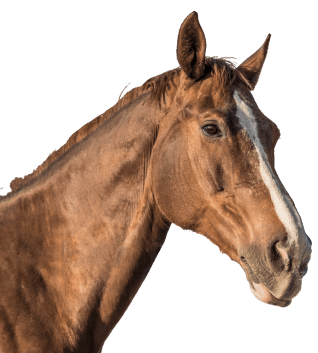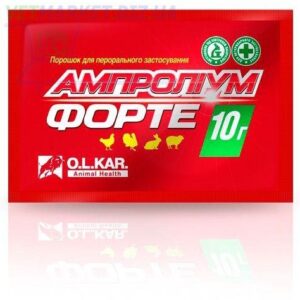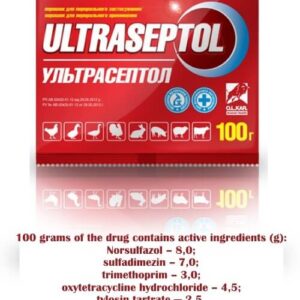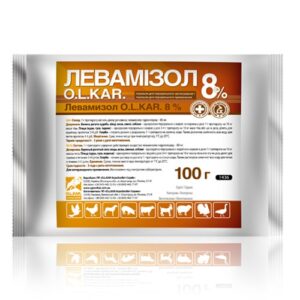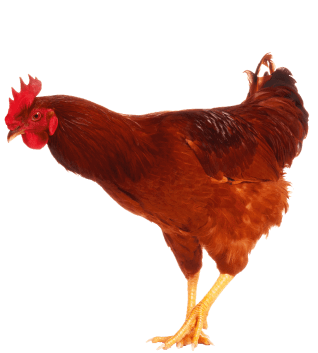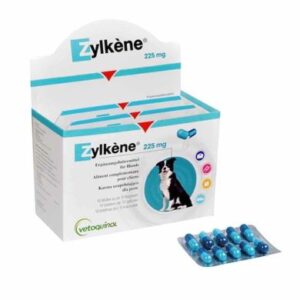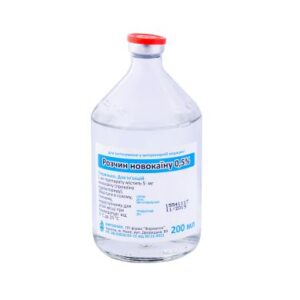BUTORPHAM (butorphanol 10 mg/ml), injection solution ( Torbutrol, Dolorex, TORBUGESIC analog), 10ml
Description
The solution is colorless, transparent.
Composition
1 ml contains:
butorphanol tartrate — 10 mg
Pharmacological properties
Butorphanol is an analgesic of the group of synthetic opioids with an agonist/antagonist effect, which is a derivative of phenanthrene. The mechanism of action consists in stimulation of κ-subtypes of opiate receptors and mixed stimulation and inhibition of μ-subtypes of opiate receptors. As a result, the interneuron transmission of pain impulses in various departments of the CNS, including the cerebral cortex, is blocked. Butorphanol has a pronounced analgesic and sedative effect, increases blood pressure and pressure in the pulmonary arteries, has an antitussive effect and can suppress breathing. Slightly stimulates the motility of the gastrointestinal tract and hepatobiliary zone.
Butorphanol is more addictive than nalbuphine and less often than morphine. It is used for pain syndromes of various genesis, in particular for premedication before, during and after operations, for renal colic and severe injuries. Depending on the type of animal, the drug has a calming effect and a weak or medium-intensity sedative effect. This is especially evident with combined anesthesia and/or neurolepto-analgesia. Breathing slows down, as during normal falling asleep, the number of heartbeats decreases. The duration and intensity of analgesia depends on the dose and individual sensitivity (increasing the dose or repeated administration increases the effect).
Butorphanol is quickly and well absorbed from the injection site. Depending on the method of administration, it takes effect after 5-15 minutes, the duration of analgesia depends on the dose and can reach 4 hours. The maximum concentration in the blood is observed within 0.5-1 hour after intramuscular administration, the maximum analgesic effect — in 1-2 hours.
80% binds to blood plasma proteins. Penetrates through the blood-brain and placental barriers and is excreted in milk. It is metabolized in the liver with the formation of inactive metabolites. It is excreted from the body in the form of metabolites mainly with urine, partly with bile and feces. The half-life is 4.7-6.6 hours.
Butorphanol has fewer side effects than other opiates.
Indication
It is used as an analgesic to eliminate pain syndrome before and after operations, as well as for premedication:
Dogs, cats — as an analgesic for severe pain (in case of injuries, before and after operations), as a sedative in combination with α2-adrenoceptor agonists (medetomidine, ketamine).
Horse — as an analgesic for short-term analgesia in moderate to severe colic pain; for sedation and premedication in combination with α2-adrenoceptor agonists (detomidine, xylazine, romifidine): during therapeutic and diagnostic procedures (minor operations on standing animals, sedation of unruly animals).
Butorphanol does not belong to the list of psychotropic drugs.
Do not prescribe to animals with increased sensitivity to the active substance of the drug, in a state of respiratory depression, with heart diseases, skull injuries, organic brain disorders, liver and kidney function disorders, convulsions and constipation.
Do not use in females during pregnancy and lactation.
Horses with cardiac arrhythmia should not be used in combination with α2-agonists. Combined use reduces the motility of the gastrointestinal tract, so do not use in case of colic associated with intestinal obstruction.
Method of application and dosage
The drug is administered to dogs intravenously, intramuscularly or subcutaneously, to cats – intravenously or subcutaneously, to horses – only intravenously in the following doses:
Dogs:
– Analgesia (monotherapy) — 0.1-0.4 ml per 10 kg of body weight (0.1-0.4 mg of butorphanol per 1 kg of body weight), slowly, intravenously (at low and medium doses), intramuscularly or subcutaneously. To avoid postoperative pain, the injection is given 15 minutes before the end of anesthesia, so that the effect lasts during the phase of coming out of anesthesia.
– Sedation — 0.1 ml per 10 kg of body weight (0.1 mg of butorphanol per 1 kg of body weight) and 0.01 mg of medetomidine per 1 kg of body weight, intravenously, intramuscularly.
– Premedication — 0.1 ml per 10 kg of body weight (0.1 mg of butorphanol per 1 kg of body weight), 0.025 mg of medetomidine per 1 kg of body weight, intramuscularly. After 15 minutes — 5 mg of ketamine per 1 kg of body weight, intramuscularly. In case of prolonged effect of ketamine, do not use the antagonist atipamezole.
Cats:
– Analgesia (monotherapy) — 15 minutes before waking up, 0.2 ml per 5 kg of body weight (0.4 mg of butorphanol per 1 kg of body weight), subcutaneously, or 0.05 ml per 5 kg of body weight (0.1 mg butorphanol per 1 kg of body weight), intravenously.
– Sedation — 0.2 ml per 5 kg of body weight (0.4 mg of butorphanol per 1 kg of body weight) and 0.05 mg of medetomidine per 1 kg of body weight, subcutaneously. Additional local anesthesia is recommended for wound treatment. The antagonist of medetomidine (when the effect of ketamine has ended) is atipamezole at a dose of 0.125 mg per 1 kg of body weight.
Horses:
– Analgesia (monotherapy) — 1 ml per 100 kg of body weight (0.1 mg of butorphanol per 1 kg of body weight), intravenously; the necessity and time of re-introduction is determined based on the animal’s clinical condition.
– Sedation and pre-anesthesia, intravenously:
- 0.012 mg of detomidine per 1 kg of body weight, after a few minutes — 0.25 ml of Butorpham per 100 kg of body weight (0.025 mg of butorphanol per 1 kg of body weight);
- 0.05 mg of romifidine per 1 kg of body weight, after 5 minutes — 0.2 ml of Butorpham per 100 kg of body weight (0.02 mg of butorphanol per 1 kg of body weight);
- 0.5 mg of xylazine per 1 kg of body weight, after 3-5 minutes – 0.5-1.0 ml of Butorpham per 100 kg of body weight (0.05-0.1 mg of butorphanol per 1 kg of body weight).
*Kilograms to Pounds conversion table
| Kilograms (kg) | Pounds (lb) | Pounds+Ounces (lb+oz) |
| 0.1 kg | 0.220 lb | 0 lb 3.527 oz |
| 1 kg | 2.205 lb | 2 lb 3.274 oz |
| 5 kg | 11.023 lb | 11 lb 0.370 oz |
| 10 kg | 22.046 lb | 22 lb 0.740 oz |
Reservation
Do not use in females during pregnancy and lactation, because butorphanol penetrates the placental barrier and enters the milk. Use of the drug in the postnatal period can cause respiratory depression in newborn animals.
Sometimes there is temporary bradypnea, a decrease in blood pressure and bradycardia, which is similar to the state of sleep. Possible pain at the injection site during intramuscular and subcutaneous administration. In cats, mydriasis, disorientation, depression are sometimes observed, in horses – slowing of intestinal peristalsis (duodenum, caecum, beginning of large colon).
Before administering the drug, do not expose the animals to stressful factors. Follow the rules of asepsis and safe fixation of the animal. Do not mix drugs in one syringe. Do not make combined injections in one place.
Before using the drug, it is necessary to carry out a detailed clinical examination of the animal, which will provide an opportunity to better assess possible risks arising from functional disorders of the cardiovascular system, liver, nervous system and lungs.
Do not use the combination of butorphanol and detomidine or butorphanol and medetomidine in animals with cardiac arrhythmias or bradycardia, in horses prone to colic due to the cardiovascular effects of alpha-2 antagonists. After these combinations, vomiting in cats is possible due to the effect of medetomidine. Sometimes the animal needs a fasting diet before using additional anesthetic. If necessary, atropine can be used as a typical parasympatholytic.
To calculate the dose for small animals, it is necessary to know their exact body weight.
The drug is used for non-productive animals and horses, the meat and milk of which are not consumed by humans.
Storage conditions
In the manufacturer’s packaging, in a dry, dark, inaccessible place for children at a temperature of +4 to + 25 °C.
After opening the bottle, store the drug in the refrigerator and use it within 28 days.
Expiration date
3 years.
BUTORPHAM: SURGERY WITHOUT RISK AND PAIN
Painful surgical interventions cause animals excessive stress, disrupt the functions of various organs and systems, and sometimes even lead to the death of the animal. Therefore, each case of intervention should be considered individually in order to choose an effective and at the same time safe pain reliever.
The choice of the drug depends on the age of the animal, the type of operation and the duration of the intervention.
Despite the significant advantages of inhalation anesthesia, injection anesthesia is the most widely used in veterinary practice. Injections of anesthetic agents are used for surgical interventions of any complexity, often in combination with other methods. Of all possible routes of administration, intravenous is usually chosen. This method allows you to quickly achieve the effect, provides a quick exit from anesthesia, good control of the depth of anesthesia, minimal impact on the cardiovascular and respiratory systems.
Currently, combined anesthesia using drugs for premedication, sedative-hypnotic agents from the group of stimulators of 2-adrenergic receptors (xylazine, acepromazine, medetomidine, dexmedetomidine, etc.) and narcotic analgesics for animals is widespread.
Butorphanol, a highly effective analgesic, is often used in clinical veterinary medicine. Analgesic properties of butorphanol are 4-7 times stronger than morphine, 20 times stronger than pentazocine and 40 times stronger than meperidine. However, this relative degree of analgesia is determined by the effect of its action as an agonist-antagonist. In addition, butorphanol has a strong antitussive effect.
“Brovapharma” LLC released Butorfan based on butorphanol. It is a highly effective and safe pain reliever for horses, cats and dogs and has the following features:
- Rapid onset of analgesic effect: with intravenous administration — a few minutes, with intramuscular — 10-15 minutes.
- The duration of action can reach 4 hours. The maximum concentration in the blood is observed after 0.5-1 hour after intramuscular administration, the maximum analgesic effect is maintained for 1-2 hours depending on the administered dose.
- Can be used before, after and during surgical interventions to prevent and eliminate pain.
- It is the only effective and safe analgesic for cats. With monoanesthesia, it is a good pain reliever, although it does not sufficiently relax the muscles and has a weak sedative effect, so it is better to use it in combination with other sedative drugs.
- Strengthens the effect of drugs for anesthesia, sleeping pills, sedatives and antihistamines on the central nervous system. Therefore, despite the safety and mild effect of butorphanol, it can be used only under the supervision of anesthesiologists.
Butorpham is recommended to be used as an analgesic for severe pre- or post-operative and post-traumatic pain, during surgical operations, therapeutic and diagnostic procedures (castration, wound treatment, surgical biopsy, laparotomy, removal of orthopedic implants, premature births and instrumental research), as well as for suppression cough in dogs, anorexia in cats and as an antiemetic.
For dogs and cats, Butorfan is used as one of the means in complex premedication before anesthesia – both with the use of tranquilizers and without them.
Safety of Butorpham
During numerous tests, it turned out that Butorfan is a really safe and effective tool. Increasing the recommended dose by 10 times did not cause serious complications and unwanted effects because Butorpham:
- does not inhibit the contractility of the heart muscle;
- does not lower blood pressure;
- does not increase the tone of the smooth muscles of the gastrointestinal tract, urinary and biliary tracts, does not lead to atony of these organs.
Butorpham is usually administered subcutaneously, intramuscularly, or intravenously in doses of 0.1 to 0.4 mg/kg. Studies have shown that analgesia lasts longer in cats than in dogs. And this is an additional advantage for using Butorpham for cats.
In terms of safety, Butorpham is similar to Dexmedison, which is used in dogs as a means of immobilization, sedation and analgesia during clinical examinations, diagnostic procedures and for premedication before basic anesthesia. The effect of dexmeditomidine (the active substance of Dexmedison) depends on the dose. Small doses produce moderate sedation without analgesia, while large doses produce significant sedation and analgesia.
For use in veterinary medicine!




